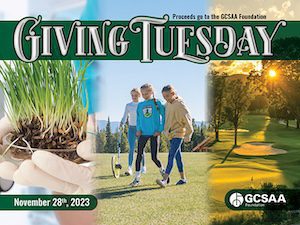Topdressing lawns with compost
Poor soil physical properties are often responsible for poor turf quality in lawns, parks, and grounds around the US. Unfortunately, correcting soil physical problems is difficult and inexpensive options are limited. For the last four seasons, we’ve been evaluating the impact of organic fertilizers and composts on turf quality at the University of Wisconsin-Madison. We’ve learned a lot of things over the course of the study, but today I wanted to focus on the benefits of using compost to improve poor quality soils.
Check Out: Down and Dirty presented by DryJect
Soils are made up of solids (sand, silt, clay, and organic matter) and pore spaces that contain air and water. It’s often said that an ideal soil will be 50% solids and 50% pore space. This combination allows for roots to penetrate easily while storing ample amounts of water and air for the roots to survive. Compacted soils have >50% solids and are often lacking in air-filled pore spaces resulting in wet soils with poor drainage and poor rooting depth. Many lawns (like mine, for instance) are built on heavily compacted soils that have <50% pore space. Core cultivation is one solution to this issue, but another good and complementary solution is topdressing with a good quality compost.
See Also: Hydrophobic soils and testing the performance of your wetting agent
In our study, we used three different types of compost all of which were found to be suitable for use after getting tested by the Penn State Agricultural Analytical Services Lab. We found that the ideal rate of compost addition is somewhere between 1/8 inch and 1/4 inch in spring and fall for an annual total of about 1/4 to 1/2 inch of compost. These amounts were easy to work into the canopy and it produced big changes in soil properties after only three or four seasons. Going higher that 1/4 inch per application could smother the grass, while going below 1/8 inch resulted in a longer time before soil changes could be seen and felt. The picture below shows the amount of compost visible immediately after applying. The compost became nearly invisible after a week or so.

After four seasons, turf topdressed with compost was thick and resilient. You can easily feel the difference in surface hardness by simply walking over the plots. We are still analyzing the soil properties in the lab (bulk density, water holding capacity, etc.), but it is clear that topdressing of compost made a major improvement.
Of course major logistical problems must be solved before beginning a large scale compost topdressing operation. First you need a good, reliable source of compost. This one is not too tough as high quality composts are often available in many urban areas. Sometimes compost producers are begging to get rid of it. But then you’ll need to transport and/or store the compost, and find the equipment to apply it with. Specialized compost spreaders exist, and we’ve found that sand topdressing units work well for some composts. But because of the volume that is applied, applying the material to a large area take quite a bit of time (lots of topdresser refills). These barriers are insurmountable in many cases. However, in the cases where it is feasible you can expect major benefits in soil quality and turf health. The proof is in the picture below where you can see the significant compost accumulation in the soils on the right.



